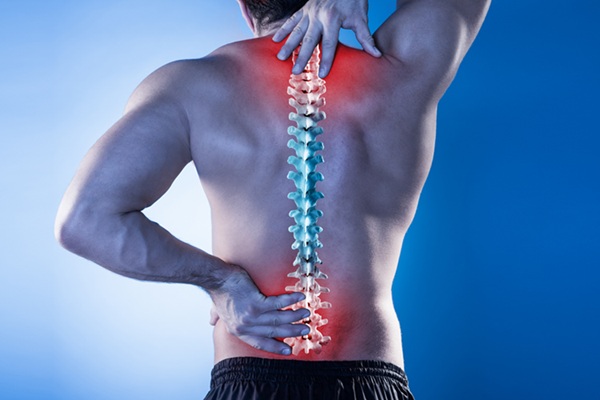Novel Compound Detects Ingested Button Batteries
|
By HospiMedica International staff writers Posted on 29 Apr 2019 |
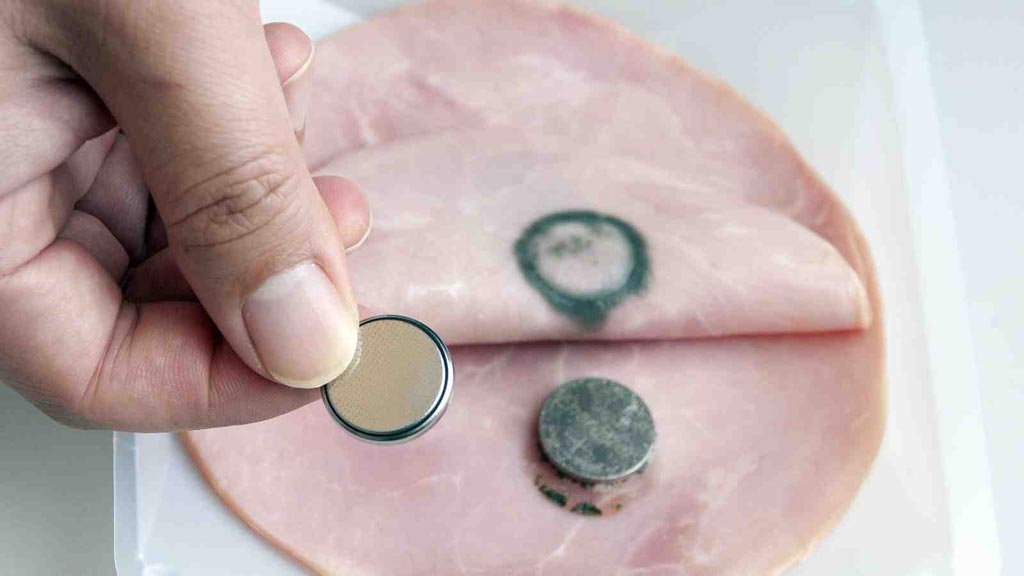
Image: New research shows that battery buttons can cause severe damage to tissues when swallowed (Photo courtesy of VUW).
A novel coating made of nontoxic alkaloids and bitter tasting compound triggers a pungent taste that causes infants to expel a button battery rather than swallow it.
Developed at Victoria University of Wellington (VUW; New Zealand), the battery coating dissolves when coming in contact with saliva, turning it blue, thus alerting parents or caregivers that a child has ingested a battery. At the same time, bitter flavorings in the coating dissuade ingestion and an emetic compound triggers vomiting, which may lead to expulsion of the battery, or at least alert the caregivers to the issue. The compound can also be incorporated into an applicator that can be used to mark unprotected batteries and other small objects with a choking risk.
“The problem is that parents don't always know that ingestion has occurred, because the batteries are so small and young children can't communicate that they have swallowed something,” said technology developer Jeongbin Ok, MID, of the VUW School of Design. “It has always been my dream to help save lives. I hope this coating can play a part in doing so by creating an invention that has global implications for the safety of children. I hope to see mass production of this coating and to see it become an industry standard.”
“This is a very exciting innovation and a great example of Kiwi ingenuity addressing a very real and serious hazard in a practical and cost-effective way,” said Martin Rushton, of the New Zealand Ministry of Business, Innovation, and Employment (MBIE). “This 'early warning' system will complement other measures around warnings and education, and we are encouraging battery manufacturers get behind improving consumer safety. Parents and caregivers will, I am sure, be keen to see button batteries with this feature, to help safeguard infants and young children.”
Button batteries are highly corrosive and can cause serious tissue damage and even fatalities within two hours of ingestion. The swallowed battery typically gets lodged in the esophagus, where it reacts with body fluids, completing a circuit, which results in the production of toxic hydroxide. The local build-up of this caustic chemical can cause tissue necrosis, throat damage, and even death. Battery ingestion causes around 3,000 annual hospitalizations in the United States alone.
Related Links:
Victoria University of Wellington
Developed at Victoria University of Wellington (VUW; New Zealand), the battery coating dissolves when coming in contact with saliva, turning it blue, thus alerting parents or caregivers that a child has ingested a battery. At the same time, bitter flavorings in the coating dissuade ingestion and an emetic compound triggers vomiting, which may lead to expulsion of the battery, or at least alert the caregivers to the issue. The compound can also be incorporated into an applicator that can be used to mark unprotected batteries and other small objects with a choking risk.
“The problem is that parents don't always know that ingestion has occurred, because the batteries are so small and young children can't communicate that they have swallowed something,” said technology developer Jeongbin Ok, MID, of the VUW School of Design. “It has always been my dream to help save lives. I hope this coating can play a part in doing so by creating an invention that has global implications for the safety of children. I hope to see mass production of this coating and to see it become an industry standard.”
“This is a very exciting innovation and a great example of Kiwi ingenuity addressing a very real and serious hazard in a practical and cost-effective way,” said Martin Rushton, of the New Zealand Ministry of Business, Innovation, and Employment (MBIE). “This 'early warning' system will complement other measures around warnings and education, and we are encouraging battery manufacturers get behind improving consumer safety. Parents and caregivers will, I am sure, be keen to see button batteries with this feature, to help safeguard infants and young children.”
Button batteries are highly corrosive and can cause serious tissue damage and even fatalities within two hours of ingestion. The swallowed battery typically gets lodged in the esophagus, where it reacts with body fluids, completing a circuit, which results in the production of toxic hydroxide. The local build-up of this caustic chemical can cause tissue necrosis, throat damage, and even death. Battery ingestion causes around 3,000 annual hospitalizations in the United States alone.
Related Links:
Victoria University of Wellington
Latest Critical Care News
- Virus Cocktail to Combat Superbugs Offers New Precision Medicine Approach for Hospitals Battling AMR
- Smart Biosensors Could Be Game-Changer for Wearable Health Tech
- Brainwave Test Detects Memory Decline Years Before Alzheimer’s Diagnosis
- Low-Cost Medical Device Stops Postpartum Hemorrhages
- Non-Invasive Wearable Sensor Detects Sweat Biomarker in Low-Perspiration Conditions
- New Autoinjector Could Transform Trauma Care in Severe Bleeding Emergencies
- Portable Light-Based Brain Monitor Improves Dementia Diagnosis
- New Ultrasound Technique Enables Safer Vein Access in Critically Ill Patient
- CVD Risk Prediction Tool Could Guide Statin Therapy
- Wearables Could Revolutionize Pregnancy Monitoring and Detect Abnormalities
- AI Model Identifies AF Patients Requiring Blood Thinners to Prevent Stroke
- Soft Robot Intubation Device Could Save Lives
- Bee-Sting Inspired Wearable Microneedles to Revolutionize Drug Delivery
- Wearable Smart Patch Runs Tests Using Sweat Instead of Blood
- AI Improves Prediction of CKD Progression to End Stage Renal Disease
- First-Of-Its-Kind Online Tool to Revolutionize Treatment of High Blood Pressure
Channels
Surgical Techniques
view channel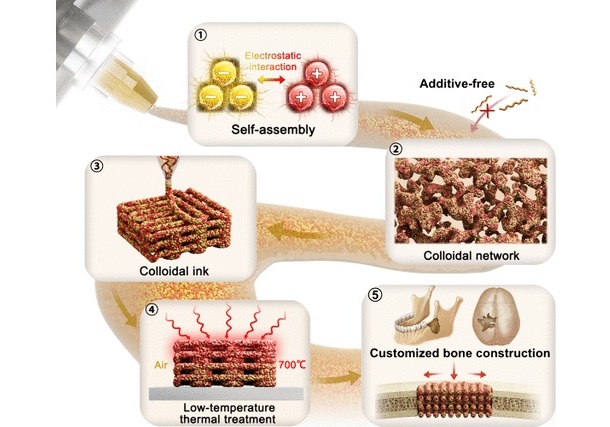
3D Printable Bio-Active Glass Could Serve as Bone Replacement Material
Glass may not seem like a natural choice for replacing bone, yet the two materials share surprising similarities in structure and strength. Bone and glass both bear weight more effectively than they withstand... Read more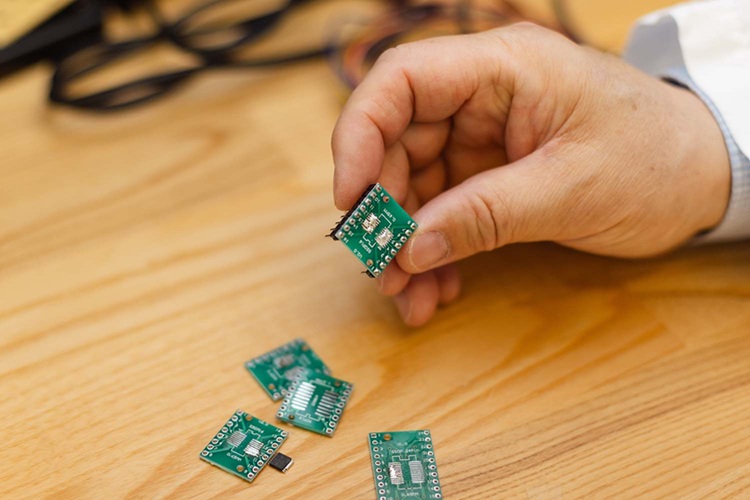
Micro Imaging Device Paired with Endoscope Spots Cancers at Earlier Stage
Digestive system cancers are among the most common cancers, with hundreds of thousands of new cases and deaths reported annually in the United States. Standard endoscopy, the main diagnostic method for... Read more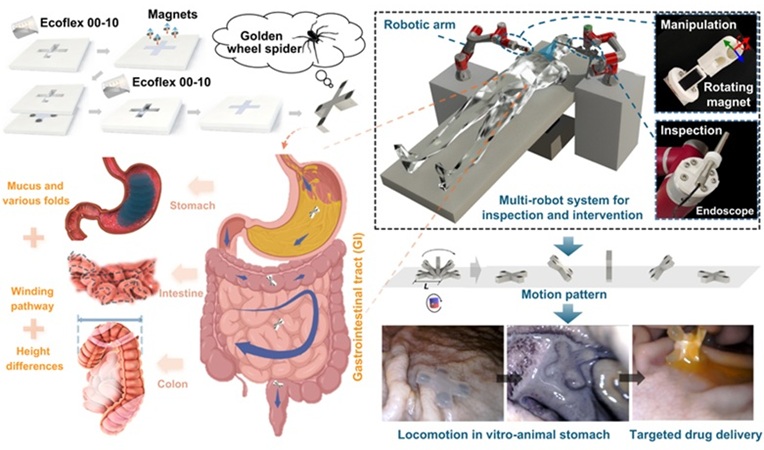
Spider-Inspired Magnetic Soft Robots to Perform Minimally Invasive GI Tract Procedures
The gastrointestinal (GI) tract is vital for digestion, nutrient absorption, and waste elimination, but it is also prone to cancers and other serious conditions. Standard endoscopy is widely used for diagnosis... Read morePatient Care
view channel
Revolutionary Automatic IV-Line Flushing Device to Enhance Infusion Care
More than 80% of in-hospital patients receive intravenous (IV) therapy. Every dose of IV medicine delivered in a small volume (<250 mL) infusion bag should be followed by subsequent flushing to ensure... Read more
VR Training Tool Combats Contamination of Portable Medical Equipment
Healthcare-associated infections (HAIs) impact one in every 31 patients, cause nearly 100,000 deaths each year, and cost USD 28.4 billion in direct medical expenses. Notably, up to 75% of these infections... Read more
Portable Biosensor Platform to Reduce Hospital-Acquired Infections
Approximately 4 million patients in the European Union acquire healthcare-associated infections (HAIs) or nosocomial infections each year, with around 37,000 deaths directly resulting from these infections,... Read moreFirst-Of-Its-Kind Portable Germicidal Light Technology Disinfects High-Touch Clinical Surfaces in Seconds
Reducing healthcare-acquired infections (HAIs) remains a pressing issue within global healthcare systems. In the United States alone, 1.7 million patients contract HAIs annually, leading to approximately... Read moreHealth IT
view channel
Printable Molecule-Selective Nanoparticles Enable Mass Production of Wearable Biosensors
The future of medicine is likely to focus on the personalization of healthcare—understanding exactly what an individual requires and delivering the appropriate combination of nutrients, metabolites, and... Read moreBusiness
view channel
Philips and Masimo Partner to Advance Patient Monitoring Measurement Technologies
Royal Philips (Amsterdam, Netherlands) and Masimo (Irvine, California, USA) have renewed their multi-year strategic collaboration, combining Philips’ expertise in patient monitoring with Masimo’s noninvasive... Read more
B. Braun Acquires Digital Microsurgery Company True Digital Surgery
The high-end microsurgery market in neurosurgery, spine, and ENT is undergoing a significant transformation. Traditional analog microscopes are giving way to digital exoscopes, which provide improved visualization,... Read more
CMEF 2025 to Promote Holistic and High-Quality Development of Medical and Health Industry
The 92nd China International Medical Equipment Fair (CMEF 2025) Autumn Exhibition is scheduled to be held from September 26 to 29 at the China Import and Export Fair Complex (Canton Fair Complex) in Guangzhou.... Read more










